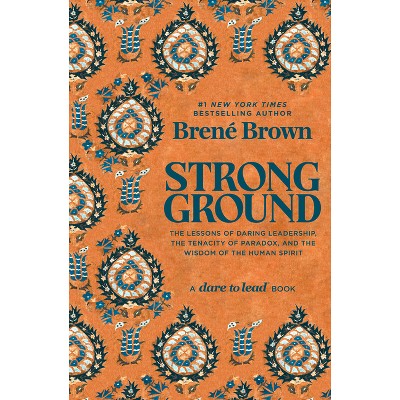Sponsored

Mapping the Netherlands East Indies - (Mapping the Past) by Ferjan Ormeling (Hardcover)
$298.00
Pre-order
Eligible for registries and wish lists
Sponsored
About this item
Highlights
- The mapping of the Netherlands East Indies was, first and foremost, meant to serve as an instrument for the government to keep its inhabitants under control and tap its resources.
- About the Author: With honorary degrees from Eötvös Lorand Technical University (Budapest 2013) and Aristoteles University (Thessaloniki 2015), Dr F.J. (Ferjan) Ormeling (1942-2025) was a well-known cartographer who specialised in atlas cartography and toponymy at Utrecht University.
- Science, Earth Sciences
- Series Name: Mapping the Past
Description
About the Book
This book describes the efforts of cartographers to map and chart the Indonesian Archipelago between 1800 and 1962. Preceded by collecting and analysing the available source materials and underlying texts, it aims to present the first comprehensive evaluation of post-VOC Dutch mapping against the backdrop of the colonial state (1800-1942) and the subsequent period of decolonisation (1942-1949/62). Although the common idea that cartography and maps, in many ways, were used as tools of power and oppression is endorsed, the approach is primarily descriptive and only critical as far as the cartographic representation is concerned. The book is meant to be a user guide that informs and differentiates, and may be valuable for anyone interested in Dutch mapping in Indonesia, providing a versatile overview of a largely unknown range of topographical and hydrographic maps.Book Synopsis
The mapping of the Netherlands East Indies was, first and foremost, meant to serve as an instrument for the government to keep its inhabitants under control and tap its resources. Only after 1900, in studies to alleviate poverty, did the colonial subjects' welfare become an item. However, even granted that mapping operations in the East Indies were principally motivated by colonialism, subjugation, and exploitation, the cartographic legacy of the Netherlands to independent Indonesia remains essential: at the time, it left the young Republic a comprehensive array of excellent hydrographic charts, up-to-date topographical maps of Java and other populous areas in the Archipelago, and sound educational material. Sadly, the dramatic transfer of power and sovereignty precluded an organised transfer of cartographic knowledge. Moreover, too few Indonesians were trained to take over, except perhaps in geological and volcanological mapping.This book describes the efforts of cartographers to map and chart the Indonesian Archipelago between 1800 and 1962. Preceded by collecting and analysing the available source materials and underlying texts, it aims to present the first comprehensive evaluation of post-VOC Dutch mapping against the backdrop of the colonial state (1800-1942) and the subsequent period of decolonisation (1942-1949/62). Although the common idea that cartography and maps, in many ways, were used as tools of power and oppression is endorsed, the approach is primarily descriptive and only critical as far as the cartographic representation is concerned. The book is meant to be a user guide that informs and differentiates, and may be valuable for anyone interested in Dutch mapping in Indonesia, providing a versatile overview of a largely unknown range of topographical and hydrographic maps.
You can read about Professor Ormeling's contributions to the field in the In Memoriam published in Caert Thresoor 44.3 (2025).
About the Author
With honorary degrees from Eötvös Lorand Technical University (Budapest 2013) and Aristoteles University (Thessaloniki 2015), Dr F.J. (Ferjan) Ormeling (1942-2025) was a well-known cartographer who specialised in atlas cartography and toponymy at Utrecht University. He served the International Cartographic Association as secretary general in 1999-2007. Since 2003, he focused on the history of cartography of Indonesia. Part of his youth was spent at the premises of the Topographical Survey in Jakarta, where his father was director of the Geographical Institute. He regularly visited Indonesia since 1980 and cooperated with scholars from Gadjah Mada University in Yogyakarta and Badan Informasi Geospasial in Cibinung. He organised toponymy courses worldwide, on behalf of the United Nations Group of Experts on Geographical Names (UNGEGN).Ferjan Ormeling read human geography, history, and cartography at Groningen and Utrecht Universities. As a member of the University of Amsterdam Explokart research team since 2007, his other historical focus was the development of thematic cartography of the Netherlands. From 2000 to 2021, he has led the editorial board of the historical-cartographic journal Caert Thresoor. In 2005 he published Biografie van de Bosatlas, a history of the genesis of the major school atlas in the Netherlands.
Dr P.P.W.J. (Paul) van den Brink studied history at the Vrije Universiteit Amsterdam and was a university lecturer at the Historical Cartographic Research Programme Explokart of Utrecht University from 1986 to 2012. From 2013, Paul van den Brink has been a historical cartographer at the Faculty of Geosciences of Utrecht University. His research focuses on Dutch institutional cartography of the eighteenth and nineteenth centuries, the cartographic publications of the Royal Netherlands Geographical Society (KNAG), and the tourist and consumer cartography of the Netherlands and the Netherlands East Indies up to 1945. Among his acclaimed book publications in these fields is Dienstbare kaarten: een cartografische geschiedenis van het Koninklijk Nederlands Aardrijkskundig Genootschap en het Tijdschrift, 1873-1966 (2010), on the cartographic history of the KNAG and its Periodical.
Dimensions (Overall): 9.25 Inches (H) x 6.1 Inches (W)
Suggested Age: 22 Years and Up
Genre: Science
Sub-Genre: Earth Sciences
Series Title: Mapping the Past
Publisher: Brill
Theme: Geography
Format: Hardcover
Author: Ferjan Ormeling
Language: English
Street Date: March 18, 2026
TCIN: 1007400528
UPC: 9789004749795
Item Number (DPCI): 247-07-3587
Origin: Made in the USA or Imported
If the item details aren’t accurate or complete, we want to know about it.
Shipping details
Estimated ship dimensions: 1 inches length x 6.1 inches width x 9.25 inches height
Estimated ship weight: 1 pounds
We regret that this item cannot be shipped to PO Boxes.
This item cannot be shipped to the following locations: American Samoa (see also separate entry under AS), Guam (see also separate entry under GU), Northern Mariana Islands, Puerto Rico (see also separate entry under PR), United States Minor Outlying Islands, Virgin Islands, U.S., APO/FPO
Return details
This item can be returned to any Target store or Target.com.
This item must be returned within 90 days of the date it was purchased in store, shipped, delivered by a Shipt shopper, or made ready for pickup.
See the return policy for complete information.
Discover more options







